Previously: Part 2, Cairns
Wednesday Sept. 18 to Saturday Sept. 21, 2002: The Great Barrier Reef
Diving the Reef
The crew of the Nimrod consisted of Ian, the captain; Klaus, the mechanic/first mate; John and Shiori, dive instructors; Molly, the hostess; and Jen, the chef. Jen was formerly a professional chef so we were treated to some outstanding meals during our time aboard ship. A typical day started with wakeup at 6:30 a.m., breakfast at 7:00, dive #1 at 8:00, dive #2 at 11:00, lunch at 12:30, dive #3 at 2:00, dive #4 at 4:30, then dinner.
After a get-acquainted session, on the ride out to the reef we had an orientation session for the layout of the boat and for the rules and regulations on diving from the boat; gear selection and fitting; and a safety briefing for things above and below the water. As we were to find out on the last day, this was to be driven home for real…
Wednesday’s dive sites included Ruby Reef, Joanie’s Joy, Steve’s Bommie, and Century Bay. We jumped into the water at dusk for that last one, so it was a night dive (which I used towards my Advanced Open Water certification). The sea life here is both much different and much the same as what I’ve seen before – new fish that are native to the western Pacific (cuttlefish, unicorn fish), coral reefs that dwarf anything I’ve seen in Florida, yet some of the same animals living on similar coral (barracuda, anemone, parrotfish). I saw my first octopus at Century Bay; they’re primarily nocturnal, and this was only my second night dive. Each site we went to had its own charms and wonders; each site was a different dive experience (some just small mounts that we’d circle from lower to higher level, some walls). Breakfast, which was typical for the trip, was bread/toast, hardboiled eggs, various cereals, and once or twice bacon. Lunch was an assortment of pastas, dinner was tandoori chicken with an incredible pavalova for dessert (a meringue cake). After dinner we would watch a movie or sit around talking and comparing notes. After four dives, not many people managed to stay up past 10:30.
Thursday’s dive sites included JNM’s Wall, Towers of Tomoko, Pixie’s Pinnacle, and Challenger Bay. We did the last one twice, one for a day dive and once at night. The first one was the deepest (used as my Deep Dive for AOW), I hit 88 feet max depth. We started to see more lionfish as we went north, and also some sharks (black-tip shark today). The water is so clear – visibility is easily 75-100 feet. We can see the bottom from standing on the boat in some places. One of the joys of diving is the freedom to move in a 3-dimensional world, as opposed to the 2-D world we live in on the surface. You can climb or dive at will, do somersaults and backflips, and keep moving, always looking down and to the side to see what there is to see. Meals for the day included Mexican (a fairly good approximation of tacos) for lunch and Iranian curry beef for dinner. Nobody ever leaves the table hungry on this trip. With the last dive, my fifth of the day, I hit a personal best for both number of dives in a day and number of dives in a 2-day period. I carried a camera underwater today (used for the Underwater Photography module for AOW) and we spent part of the first Challenger Bay dive practicing navigation skills (for the Underwater Navigation module). Most of the dives had very little current, though sometimes it picked up unexpectedly and we had to swim a little harder to get back.
On Friday, the last day of diving, I had to cut things short in order to not violate the “no diving within 24 hours of flying” rule. That’s being conservative, but I’ve been doing multiple repetitive dives and I don’t want to take any chances of getting bent (the bends, decompression sickness). So I only did the first two dives, snorkeled the third, and sat out the fourth. Cod Hole was the site for both morning dives; it gets its name from the giant potato cod which must be about 6 feet long, that live around there and wait for the feedings. The instructor has everyone line up in a semicircle around her and then feeds the cod with a tasty fish, which just happens to be right in front of your face. The cod zooms in for the treat and will probably bump into you (and don’t have your hands showing, or they may mistake your fingers for food). After the feedings we explored the area on our own. On our way back, the current picked up and about half of the group was unable to swim back to the boat on their own, and everyone followed procedures – surface, inflate your vest, and signal the boat. The Nimrod’s rescue boat motored out to get people two at a time, towing them back like a water-skier (but on their stomach, half under water). My group of four surfaced about 50 yards from the boat, and in the 10 minutes it took to get another group in, have the boat come out for the first two, and then return for me, we drifted about another 30 yards. There was no way we could have fought to overcome the current and go back to the boat, given that we were at the end of the dive with just our normal reserves of air left. The current dropped off by the time of the second dive at Cod Hole, where we were lucky to see moray eels and a sleeping white-tip shark (my second shark species of the trip). Meals included pancakes for breakfast, spring rolls and rice for lunch, and hot wings and ribs for dinner.
Unfortunately, during the afternoon, one of the guys on the trip noticed signs of decompression sickness – nitrogen bubbles coming out of the body’s tissues into the bloodstream. It can be very painful, depending on how bad it is and where the bubbles collect (usually the joints or in the spine), and can lead to permanent injury if not treated. That’s why it’s a huge deal if someone says they’re feeling some tingling in the arms, especially when he says that he felt the same thing the last time he got the bends. The crew got him on oxygen and while we were eating dinner we made a beeline for Lizard Island, a resort island with a hospital (the nearest one). We were met at the dock by the Royal Flying Doctor Service out of Cairns, who would fly him back to Cairns for a week of treatment in a recompression chamber. The RFDS, which I would find out later, has about 20 branches throughout the country and has doctors on call to fly to where the patient is. We didn’t hear anything back before the end of the trip the next day.
Ian, the ship’s captain, made a video of events during the trip, both on board and underwater. After dinner we watched the video, laughing at ourselves and marveling over what we had seen. The Japanese couple, it was revealed, were on their honeymoon, so in their honor Jen made a Baked Alaska. We also got the opportunity to purchase hats, shirts, maps, books, etc. from the “ship shop”; I got a copy of the video, a cap, and a t-shirt.
During the trip, I kept a log (using someone’s GPS) of where we traveled on our dives. We left Cairns (16 deg 55’ S, 145 deg 45’ E) and traveled all the way up to Lizard Island (14 deg 40’ S, 145 deg 27’ E), around 150 miles.
On Saturday, we woke up at 6:30 as usual, though this time we awoke in port. We left Lizard Island about midnight and got into Cooktown during the night, our point of disembarkation. After breakfast we settled the bills and took the requisite group photos, and then boarded the bus to the “airport”.
That was more like an airstrip than an airport – in fact, it was originally a WWII airstrip built for homeland defense and training (though it has since been built up and repaved). Our group took three air taxis (7-seaters) on Skytrans Airlines, cruising down the coast at 1000 feet altitude at an airspeed of 150 knots for the 45-minute trip.
(The blue Nimrod Explorer boat is visible near the bottom right corner of the above picture, as we're flying over it on the way back to Cairns)
We didn’t fly over the reef as had originally been scheduled, we just flew down the coast. The flights got in to the Cairns Airport at 10:30, right on schedule, and with enough time for me to get to the other side of the airport for my 11:30 flight to Alice Springs. That was a good thing, since there’s only one flight a day out of Cairns to Alice Springs. Once we got our bags and boarded the bus, we said our goodbyes as the bus dropped me off at the departure terminal.
Here's the whole Flickr set from my time on the boat.
Next: Part 4
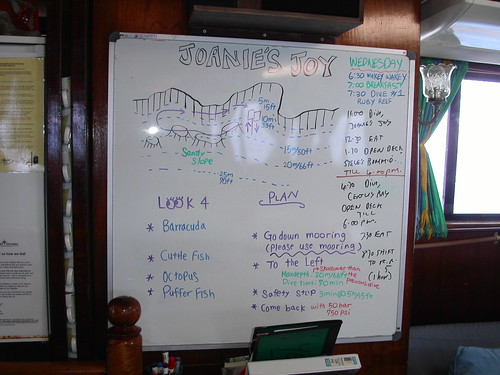

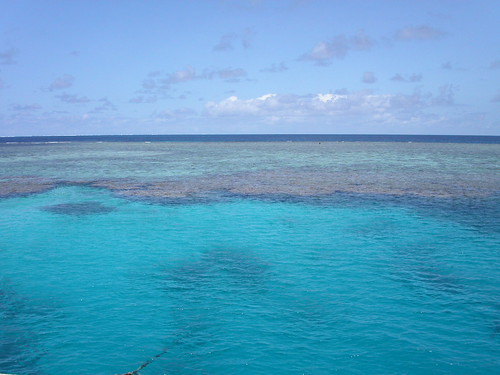
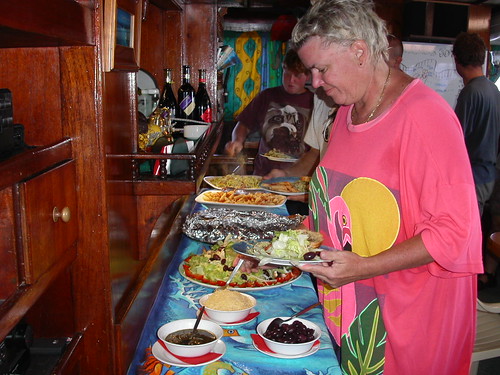
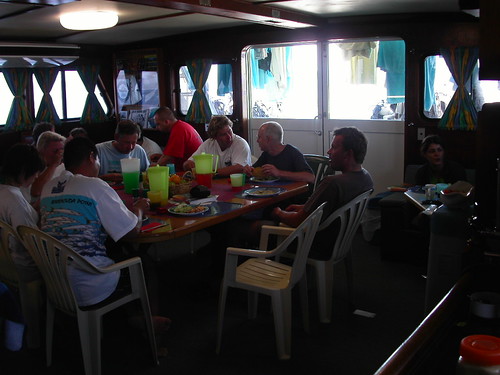


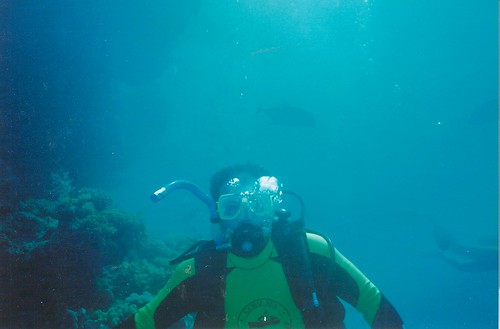



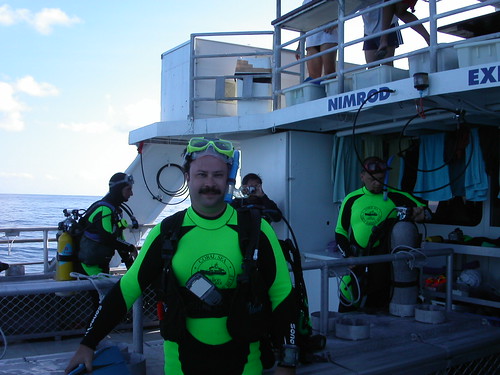
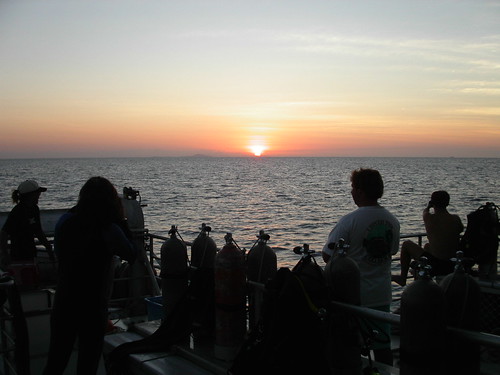
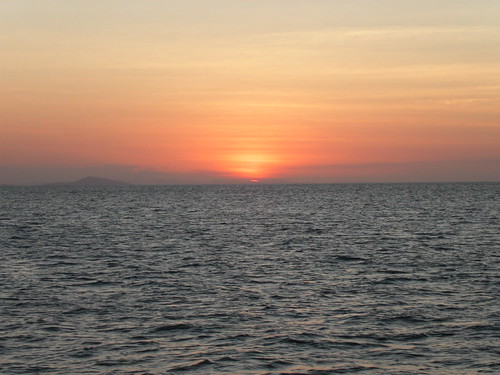
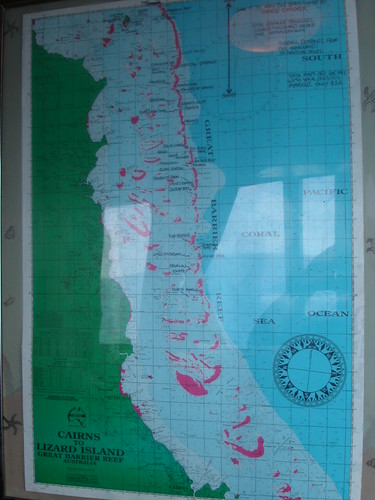
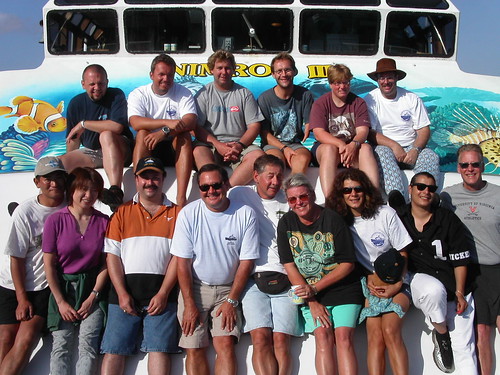
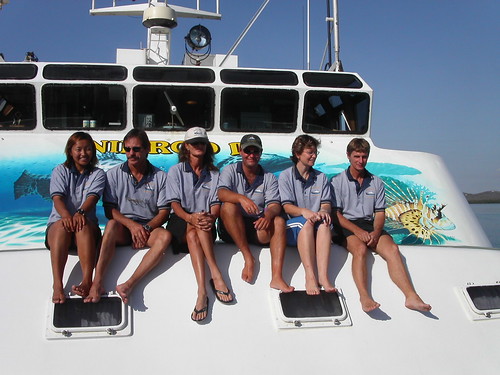
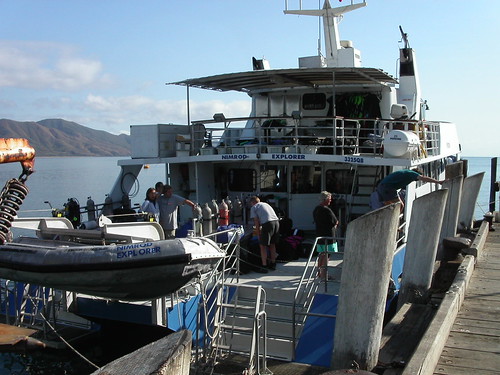
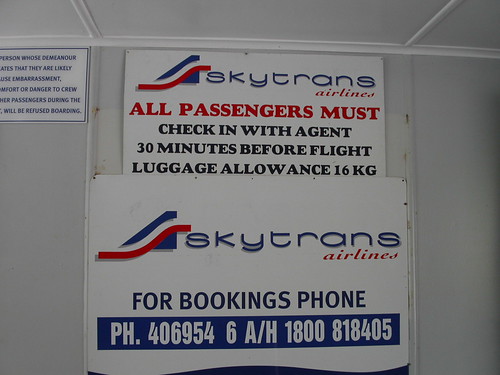

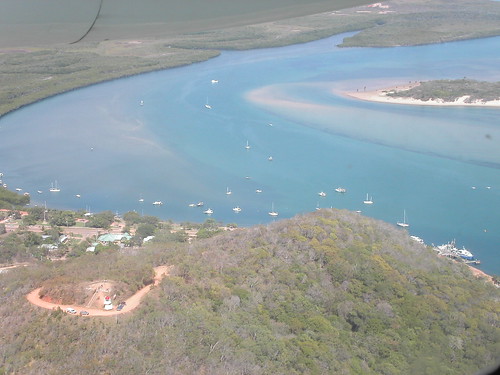
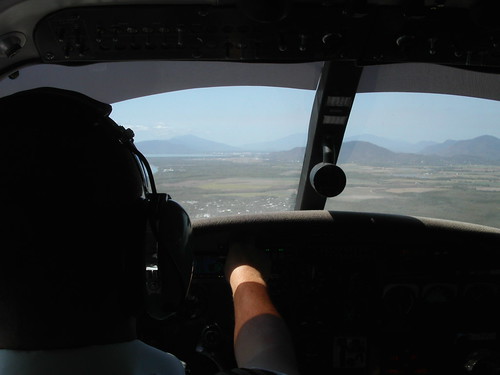

No comments:
Post a Comment